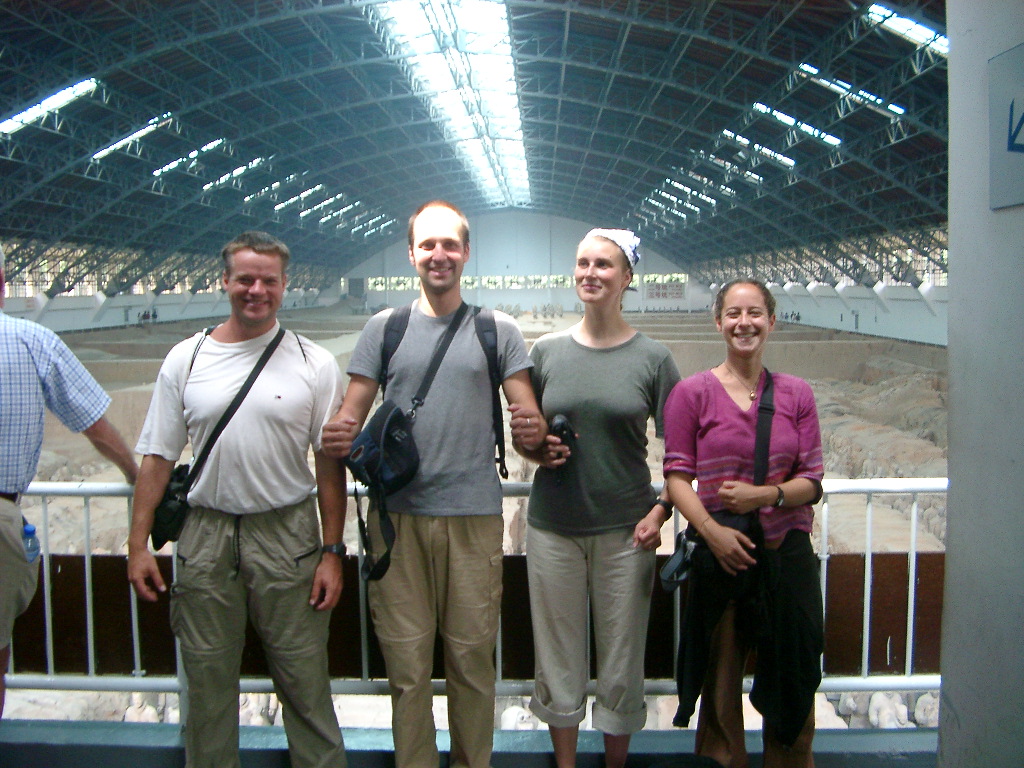The Terracotta Army, a colossal collection of life-sized clay soldiers, horses, and chariots, represents one of the most remarkable archaeological discoveries in history. Unearthed near the city of Xi’an in the Shaanxi province of China, this vast army was created over two millennia ago to accompany China’s first emperor, Qin Shi Huang, into the afterlife. The Terracotta Army stands as a testament to the power, artistry, and meticulous planning of ancient China.
The origins of the Terracotta Army trace back to the Qin Dynasty (221-206 BCE), a period marked by the unification of China under the rule of Emperor Qin Shi Huang. In his quest for immortality and eternal power, Qin Shi Huang ordered the construction of a monumental mausoleum that would serve as his final resting place. The Terracotta Army was intended to guard the emperor in the afterlife and mirror the grandeur of his earthly rule.
Discovered in 1974 by local farmers digging a well, the Terracotta Army site is part of a vast complex that includes three pits containing thousands of clay soldiers and horses. Pit 1, the largest and most well-known, houses around 6,000 life-sized infantrymen, archers, cavalry, and chariots. Each figure is meticulously crafted with unique facial features, hairstyles, and armor, reflecting the remarkable craftsmanship of ancient Chinese artisans.
The soldiers were created using a mass-production system, where specialized workshops produced different body parts separately before assembling them into complete figures. The attention to detail is astounding, with variations in height, clothing, and facial expressions, showcasing the individuality of each warrior. The realism of the Terracotta Army extends to the weapons held by the soldiers, crafted with such precision that they were once functional.
Pit 2 contains a mix of infantry and cavalry, providing a glimpse into the military hierarchy of the time. Additionally, it includes high-ranking officers and a command post, emphasizing the strategic planning involved in the construction of the army. Pit 3 is smaller and features fewer soldiers but includes a command chariot and high-ranking officers, further illustrating the complexity and organization of the burial arrangement.
The significance of the Terracotta Army extends beyond its sheer scale and artistic merit. It offers valuable insights into the military tactics, weaponry, and social structure of ancient China. The meticulous arrangement of the soldiers in battle formation suggests a deep understanding of military strategy, while the diverse facial features and clothing provide a snapshot of the cultural diversity within the Qin Dynasty.
The discovery of the Terracotta Army has also raised questions about the mausoleum’s purpose and the afterlife beliefs of Emperor Qin Shi Huang. The army’s existence suggests a belief in an afterlife that mirrored the emperor’s earthly rule, complete with a military force to defend him. The scale and complexity of the tomb complex, however, also hint at the emperor’s desire for immortality, reflecting the profound influence of Daoist and Confucian philosophies on ancient Chinese culture.
In conclusion, the Terracotta Army is a remarkable archaeological treasure that has captivated the world with its scale, artistry, and historical significance. As guardians of China’s first emperor, these clay warriors provide a window into the military, artistic, and philosophical aspects of the Qin Dynasty. Preserving the legacy of an ancient civilization, the Terracotta Army continues to fascinate scholars and visitors alike, reminding us of the enduring power and innovation of China’s ancient past.



